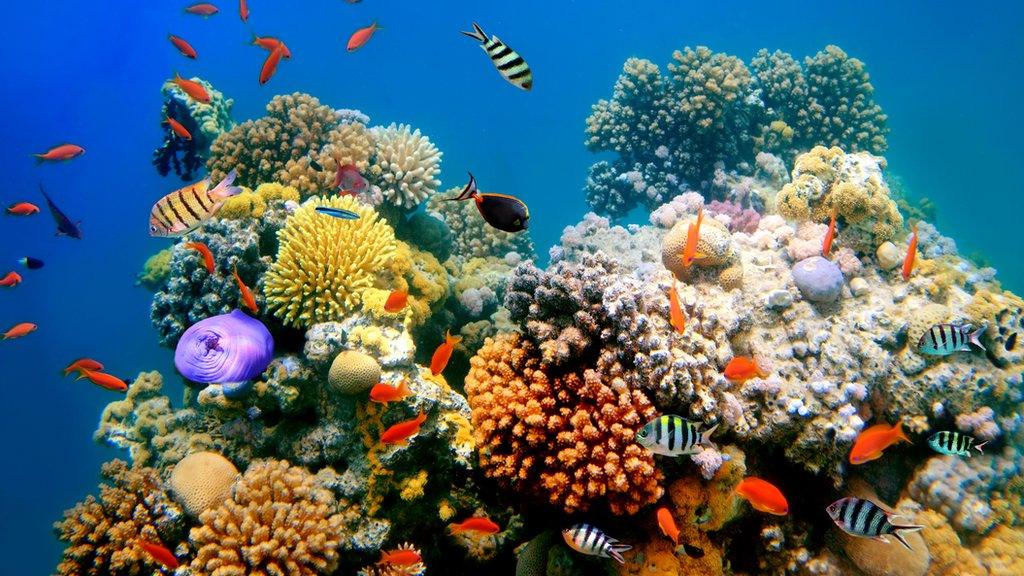What does a healthy coral reef sound like?
- Published
- comments
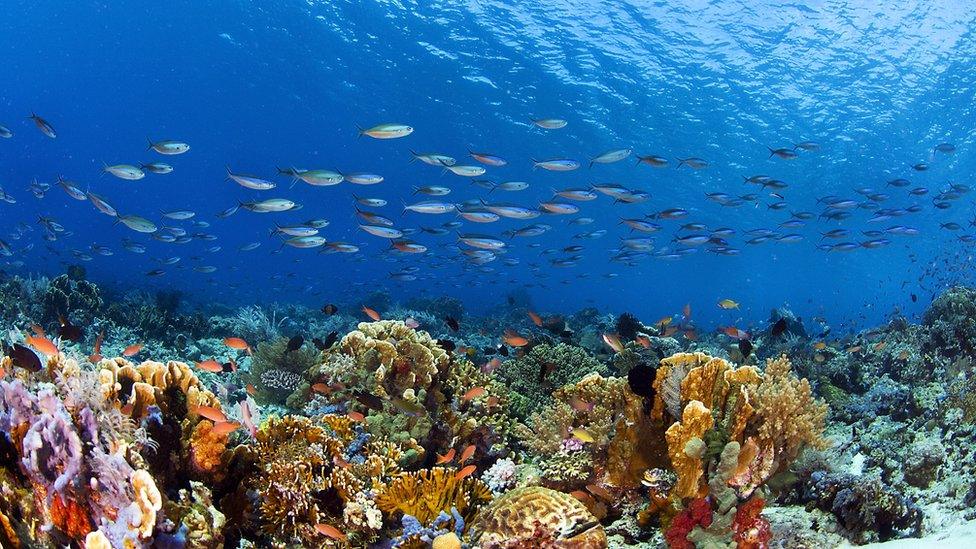
When a team of scientists listened to an audio clip recorded underwater off islands in central Indonesia, they heard unusual sounds - something which sounded like a crackling campfire.
But instead, it was a coral reef, full of sea life!
The experts say that a healthy reef has a complex "crackling, campfire-like" sound because of all the creatures living on it, and in it.
Scientists from British and Indonesian universities published a study last month, after using hundreds of such audio clips to train a computer programme to monitor the health of a coral reef by listening to it.
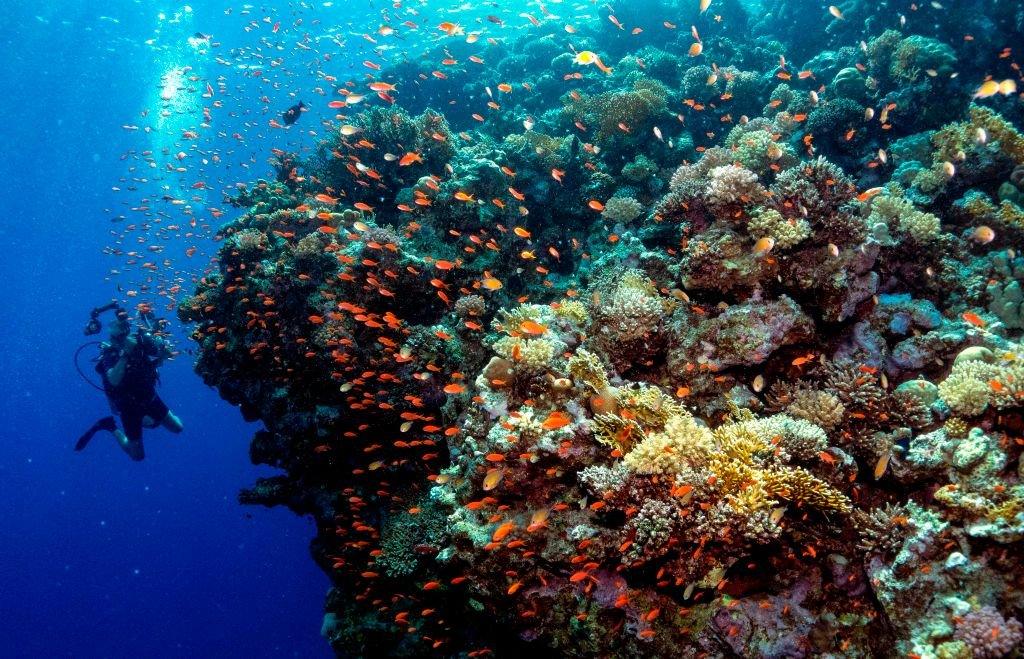
A special device called a hydrophone, used to record underwater soundscape, was placed on a reef in the sea of the Spermonde archipelago.
By playing the audio clips and analysing them using an artificial intelligence (AI) listening system, experts checked the frequency and loudness of the sound from the audio clips, and used the data to determine whether the reef is healthy or damaged.
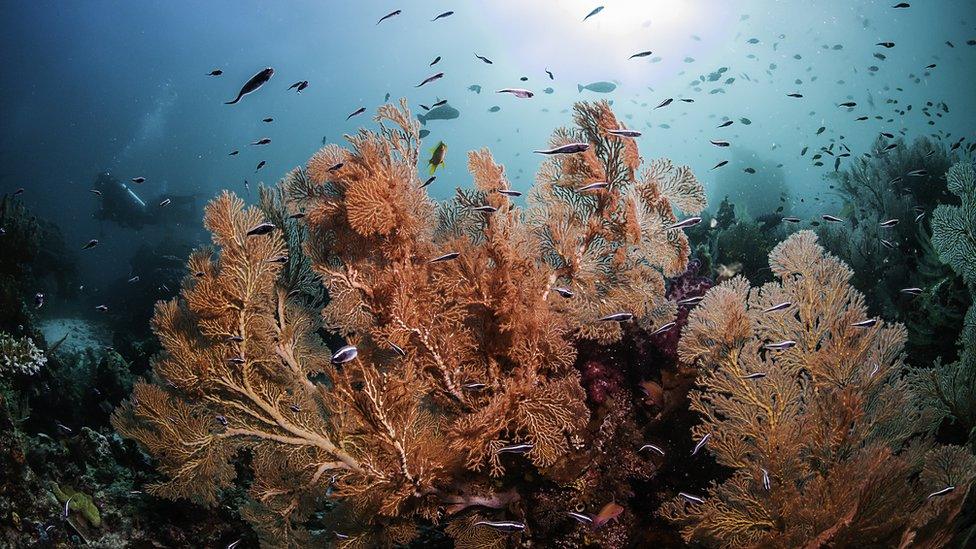
They found that damaged reefs were be much quieter, and not have the same crackling effect.
The results were published in the Ecological Indicators journal.
The scientists hope it can will help conservation groups around the world to track reef health more efficiently, and also want to collect underwater recordings from reefs in Australia, Mexico and the Virgin Islands to help assess the progress of coral restoration projects there also.
Indonesian conservationist and lecturer at the marine sciences faculty of Hasanuddin University Syafyudin Yusuf said the research would also help in monitoring reef health in Indonesia.
How do reefs become damaged?
How does coral become bleached?
About 14% of the world's coral on reefs was lost between 2009 and 2018 according to the Global Coral Reef Monitoring Network.
Coral reefs are under threat due to warming oceans and increased acidity - much of it due to human behaviour.
While they cover less than 1% of the ocean floor, coral reefs support more than 25% of marine biodiversity, including turtles, fish and lobsters - making them good ground for fishing.
- Published7 December 2020
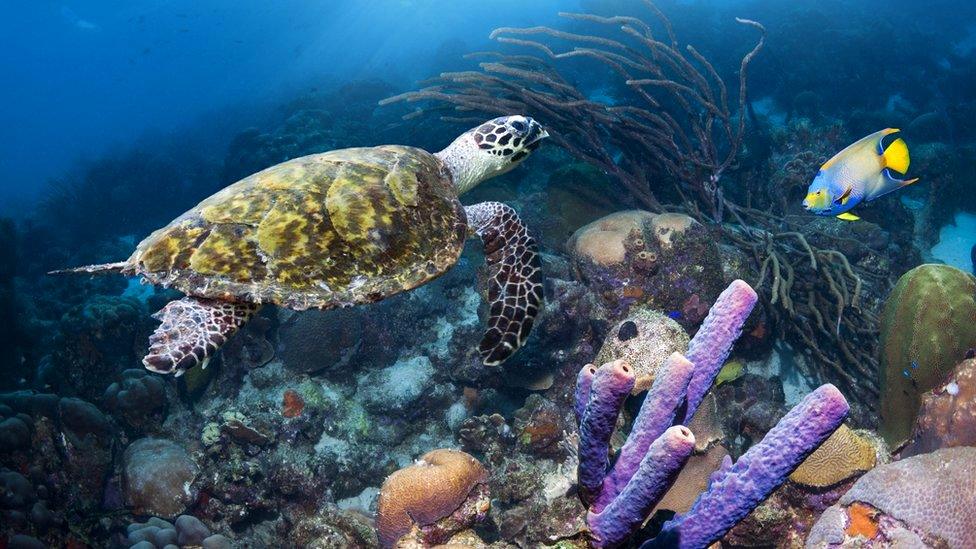
- Published9 April 2020
